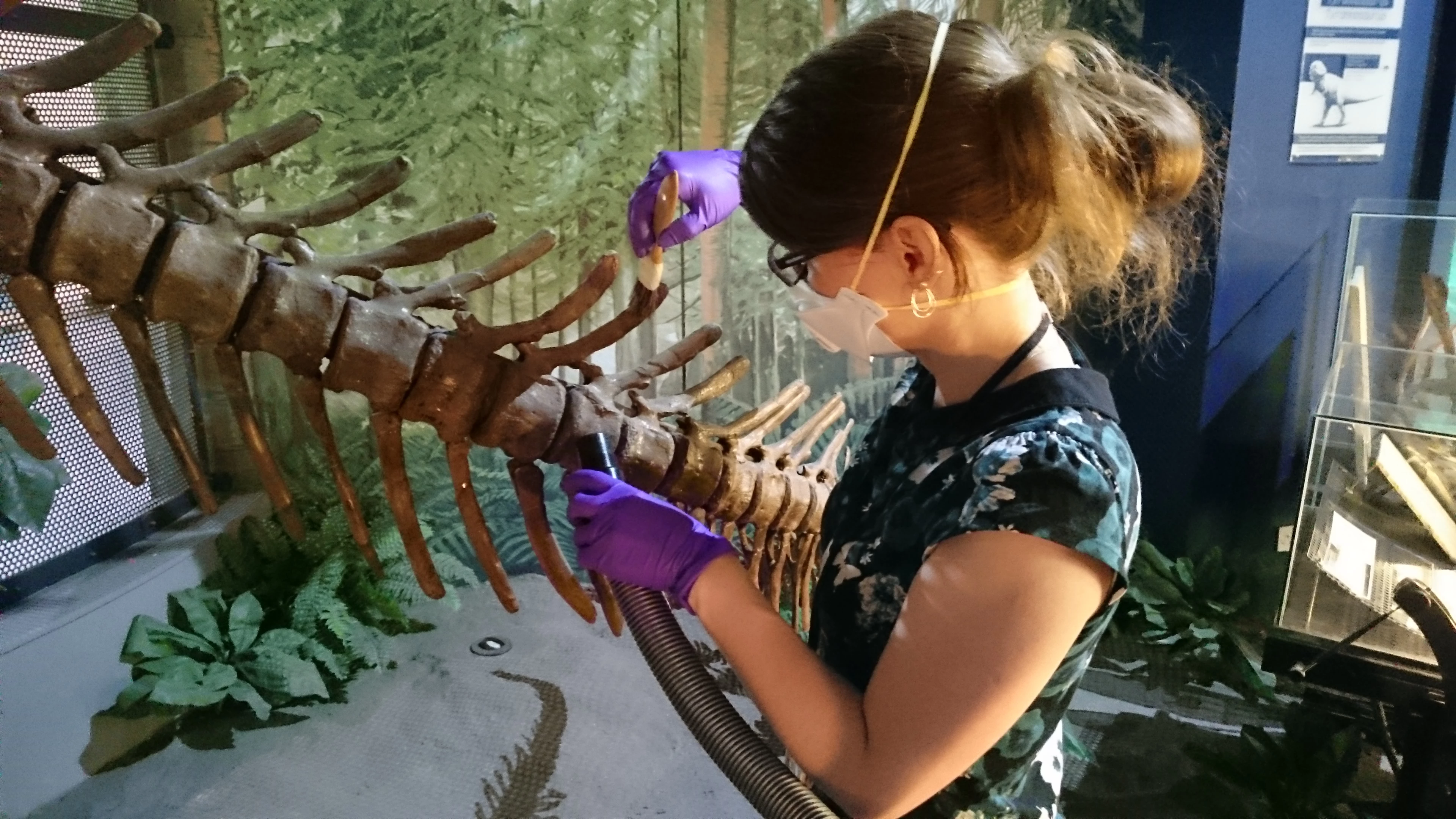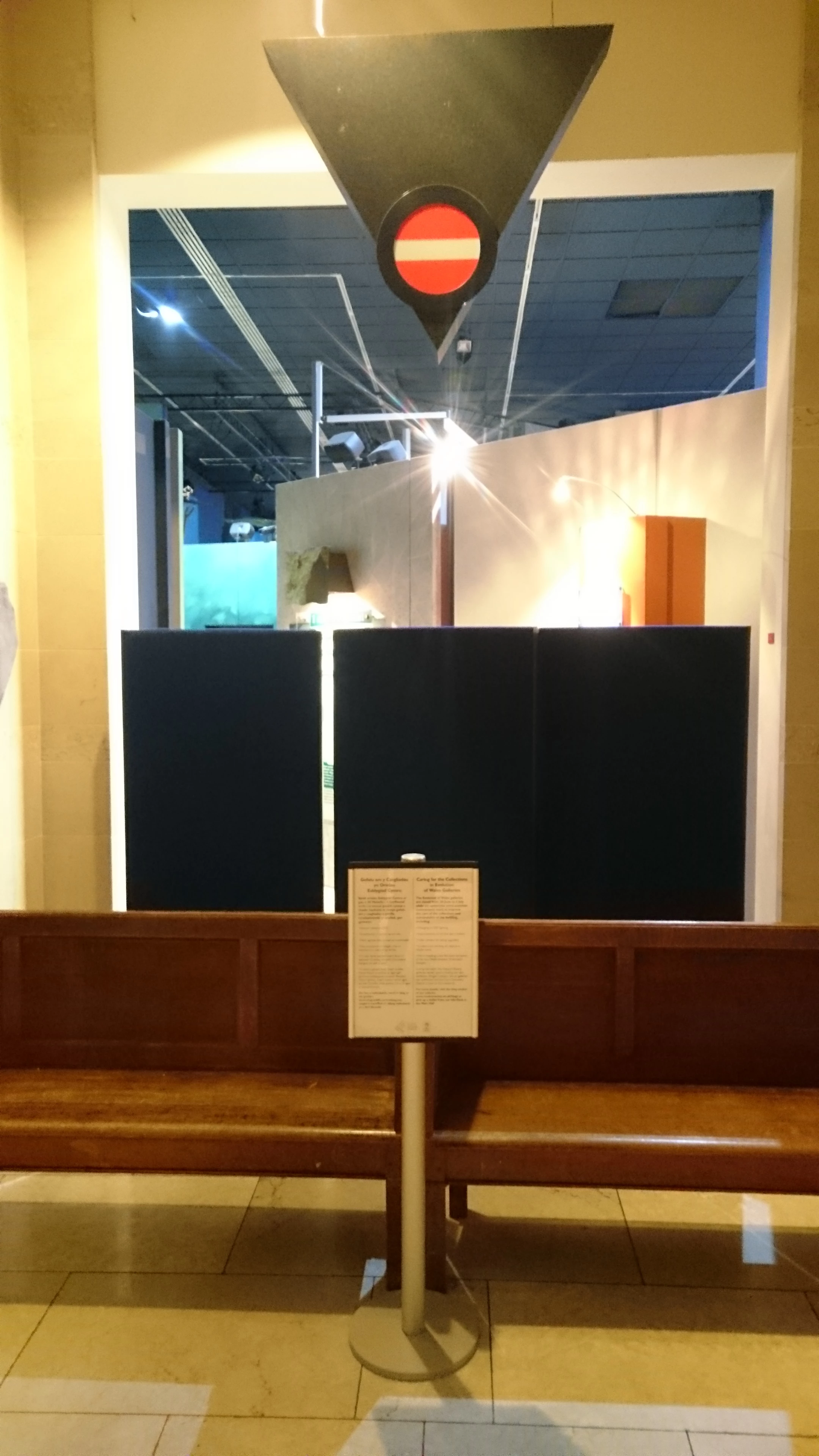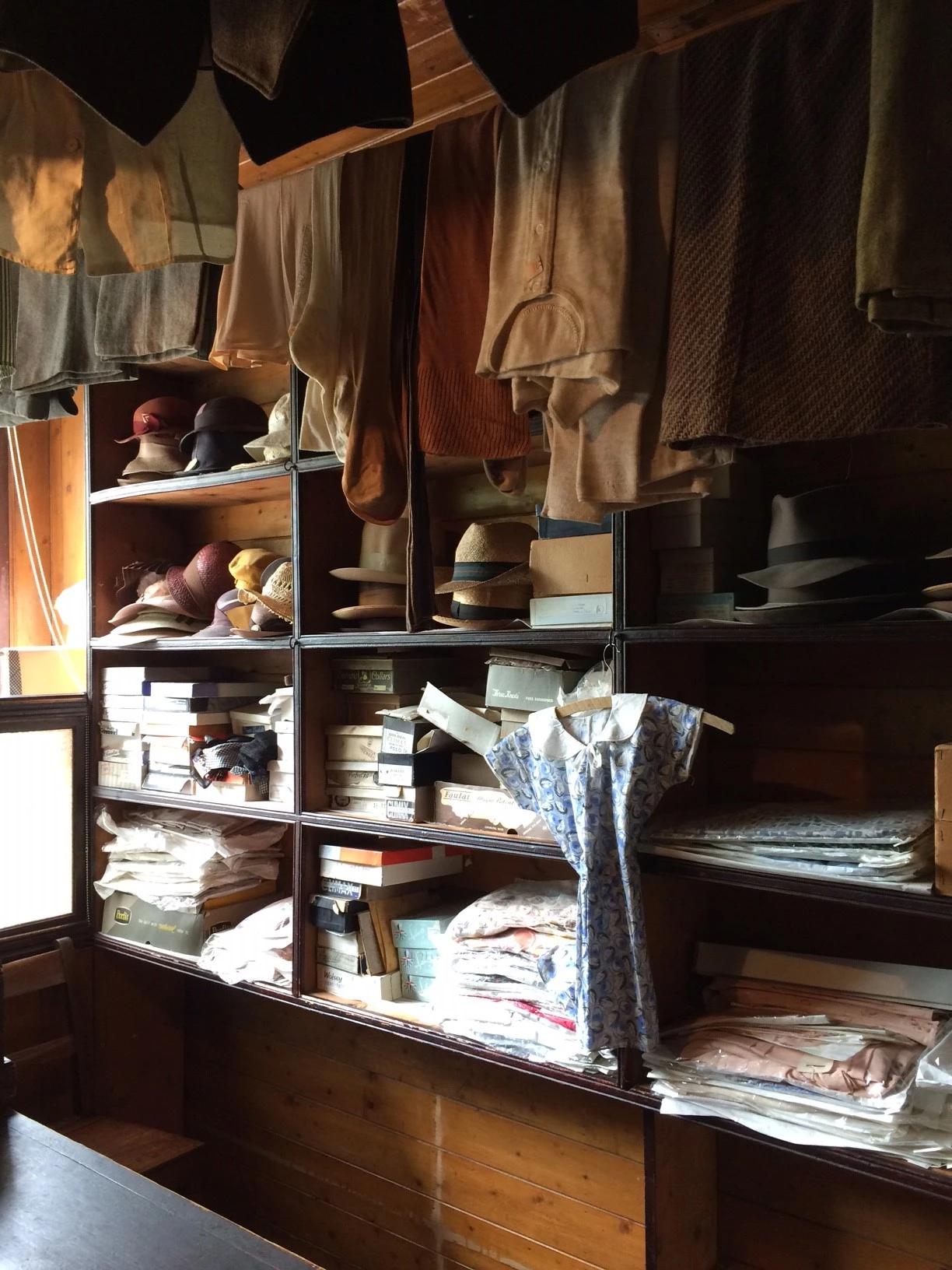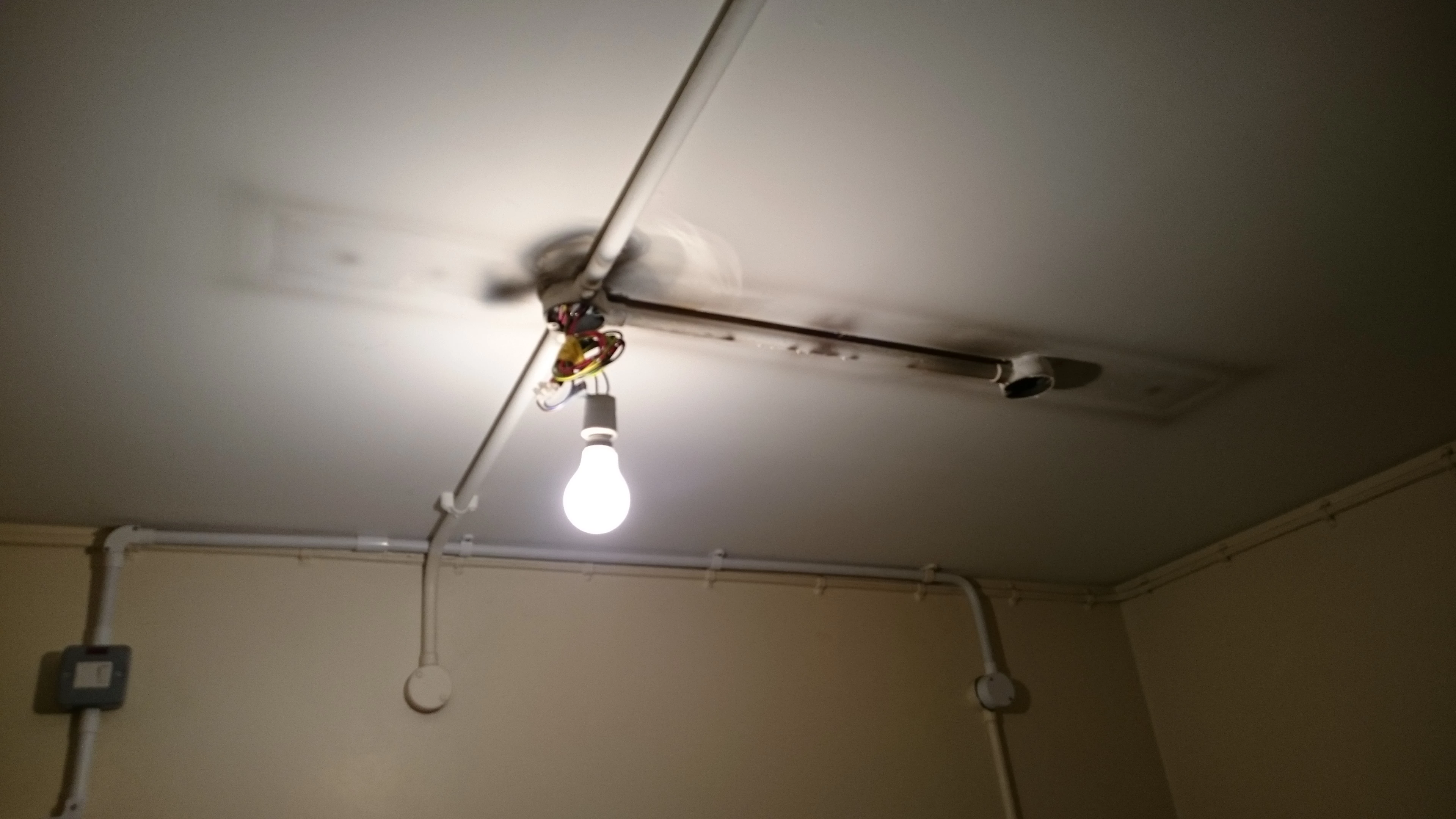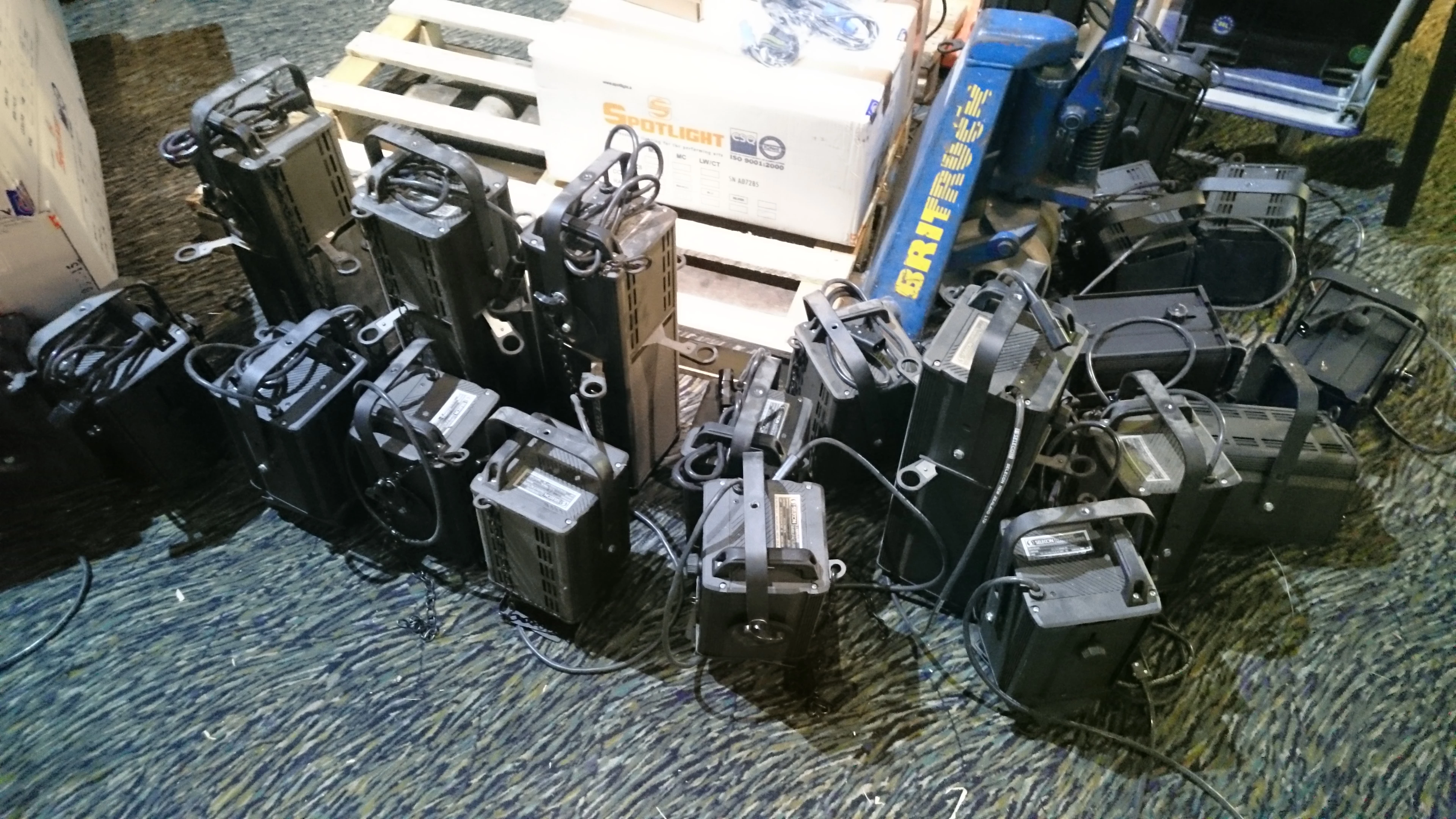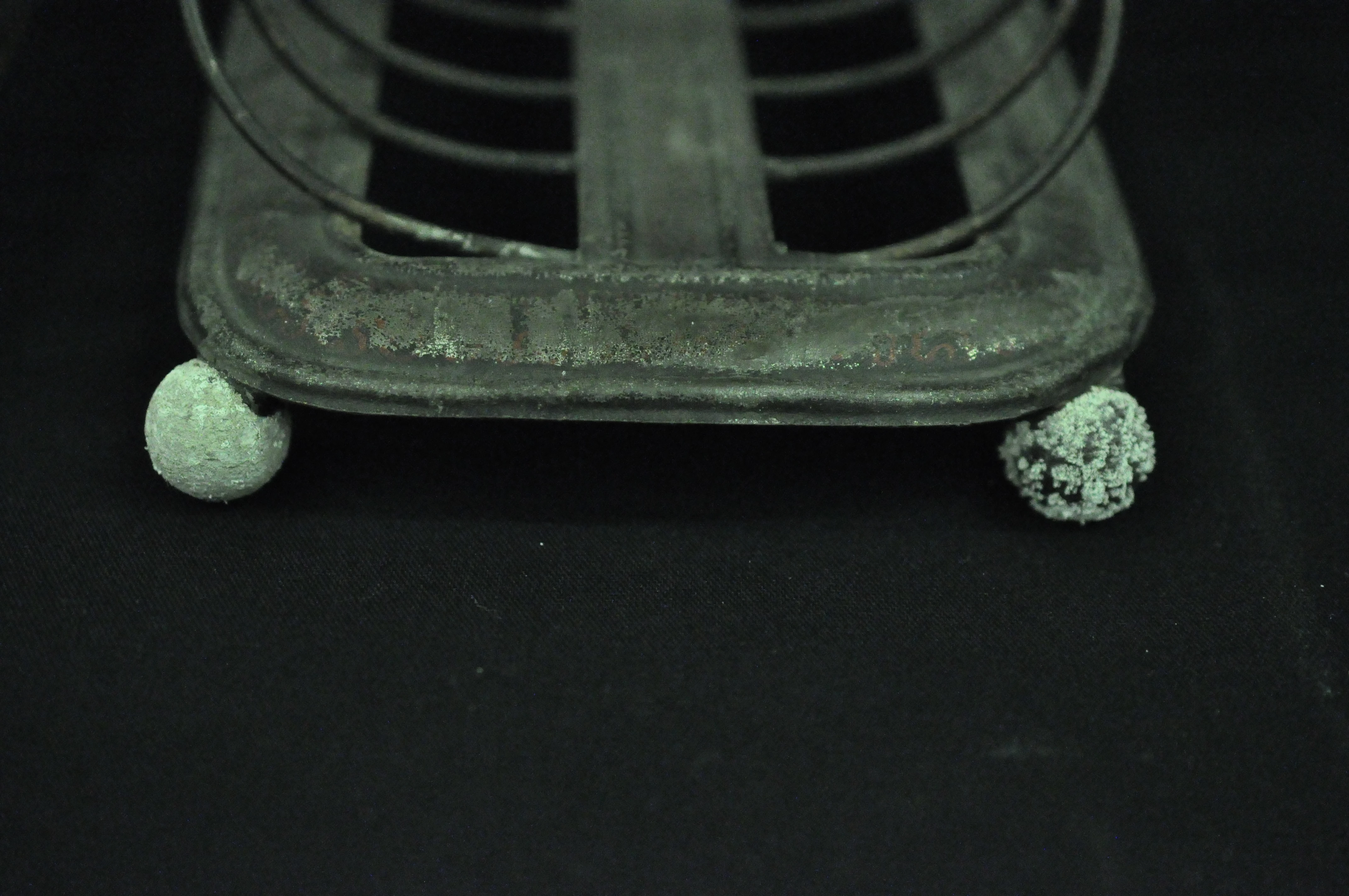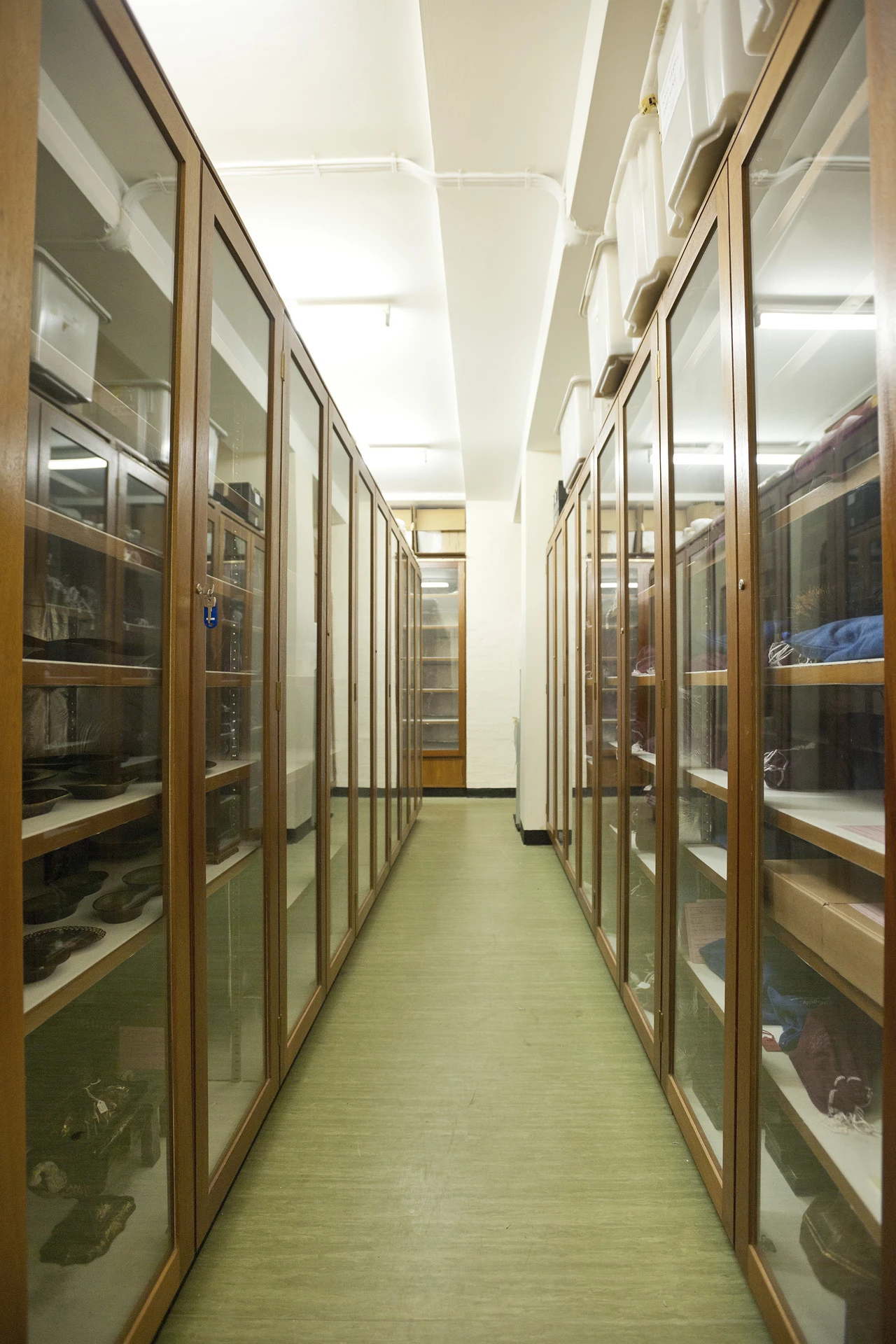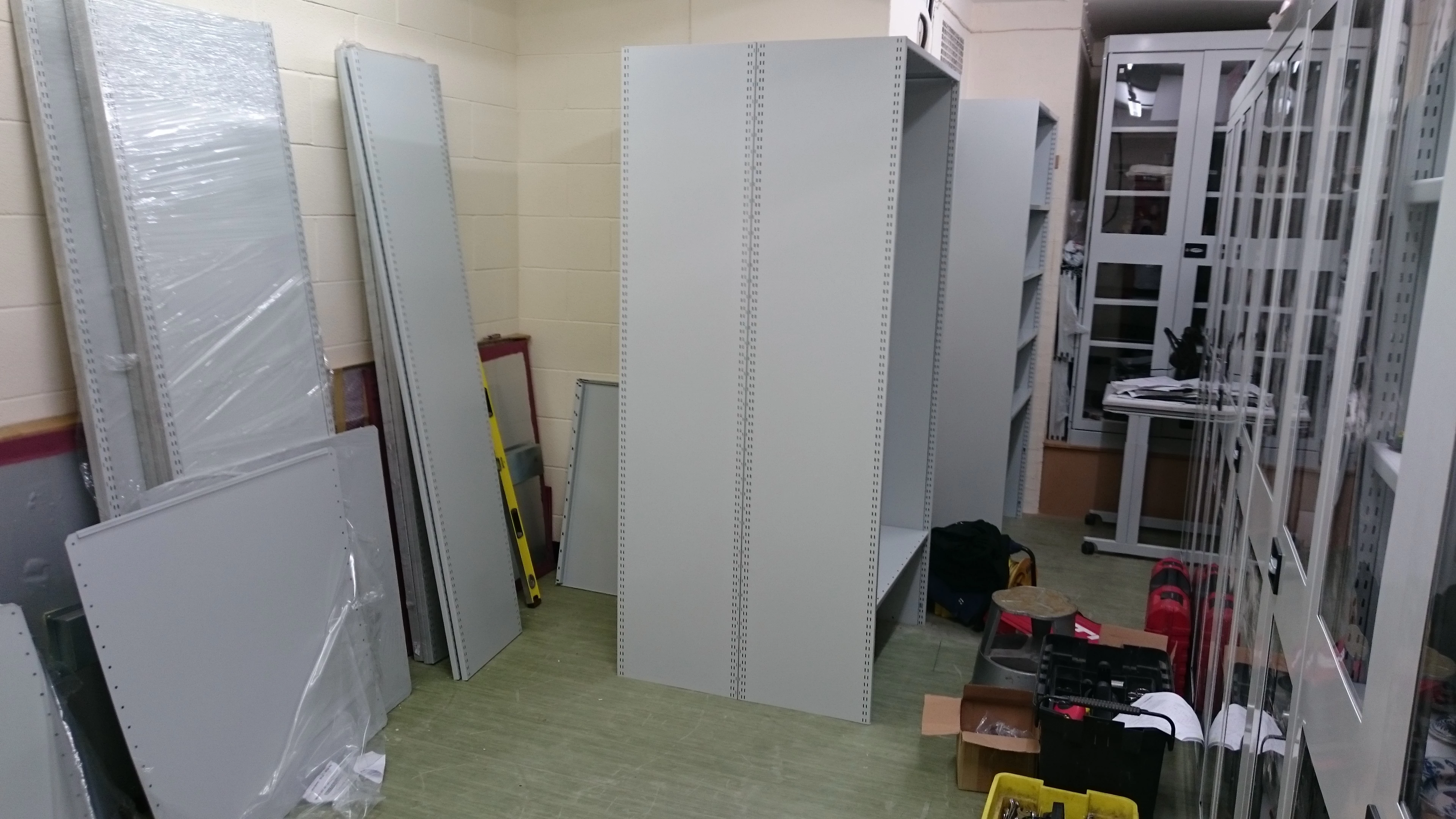Of dust bunnies and dust rhinos
, 23 Mehefin 2016
Our Geology galleries at National Museum Cardiff are still closed for essential maintenance. We are changing things around a bit – out with the old and in with the new: we are changing old display screens for new ones; old light bulbs for new ones; old fire beams new ones; old dust – well, for no dust at all. Yes, the dinosaurs are having their vertebrae tickled to release some of the dust of the centuries and keep them looking pretty.
Actually, if you have been to see the dinosaurs recently there is a good chance you have left some of yourself on them. Dust in our galleries is composed of tiny particles that come into the building through our ventilation system (although we have very good air filtration). Other dust particles are fibres from the clothes you wear. But the bulk of dust is, actually – well, there is no easy way of saying this: bits of YOU. Especially hair and skin.
Humans are living beings whose bodies renew themselves constantly. Our skin is our largest organ. New cells are formed constantly at the base layer of the epidermis (the outer part of the skin). These new cells move up through the layers of the epidermis and die as they are further away from blood vessels that supply nutrients. Eventually they reach the corneum, the outermost layer, and slough off.
We love having you in the museum (actually, next time you visit why don’t you bring a friend who hasn’t been for a while). But if you shed your skin while you are in the museum you are inevitably leaving a small part of your body in the building. Nice.
These particles are tiny and very light. They will happily settle on surfaces. Our dinosaurs (and, of course, all other displays) provide ideal surfaces for dust to settle. And no, dust bunnies do not evolve into dust rhinos – so there is no need to set up protective zones to save these cute little things.
Dust will form a layer on objects, which, contrary to popular opinion by people who dislike cleaning, is not protective. On the contrary: dust attracts moisture from the air and then becomes very reactive, which can lead to corrosion and other forms of damage to our objects. This is not only unsightly but can result in expensive conservation treatments or even irreparable damage.
We’re in the business of heritage preservation for the long-term. We want to help keep all of the important national collections for generations to come. This includes removing your dead skin cells from the dinosaur skeletons while we have the space to work in the gallery.
And no, we would not get rid of our vacuum cleaner because it is only collecting dust.
Our Geology galleries are going to re-open on Tuesday 5th July.
Find out more about care of collections at Amgueddfa Cymru - National Museum Wales here.

